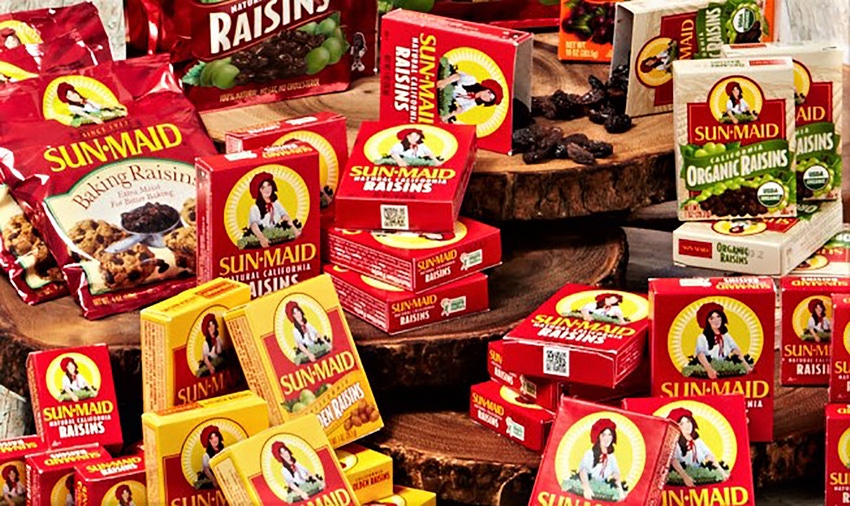
Say the word 'grapes' and people generally think first of wine, then a variety of table grapes, and ultimately — oh, yeah, raisins too.
The California raisin industry would like to see more recognition of the part they play in the world of grape growing. They do so on some 150,000 acres (down from 200,000) with about 2,000 growers who produce 100% of U.S. raisins in the central San Joaquin Valley near Fresno, delivering dried grapes of the Vitis vinifera natural seedless varietal type.
Two thirds of America's raisin production is consumed in the United States and Canada with the other third exported to some 50 countries.
Dried fruits have evolved from fresh fruits for thousands of years with grapes at the top of the list as most suitable for drying. If you'd like to be a hit at party trivia, remember the word "raisin" came from the Latin "racemus", meaning a cluster of grapes or berries.
A search of the CalRaisins.org webpage shows some heavy promotion based on research finding all-natural-dried-in-the-sun-no-sugar-added fruit positively affects glucose levels for diabetics and significantly lowers blood pressure.
That said by way of history and background, the raisin folks are having many of the problems encountered by the wine folks. Like one politician said not long ago — "I feel your pain."
"Some of those tough tales being told by the wine growers are very applicable on the raisin side of the industry," says Harry Overly, CEO of Sun-Maid Growers of California. "The pricing volatility over the past few years priced the product out of the global market and we saw significant declines in export sales, upwards of 25%, which put pressure on our inventory positions."
With trading prices for the bulk or ingredient market literally falling off the map, upwards of 40% and in some cases, 50%, pessimism began to creep in.
"Now, it's going to be a challenging year in terms of what the commodity value will be for growers," Overly said.
Add those problems to land and climate concerns, wildfires, water shortages and a lack of labor and the pessimism barometer rises.
"Costs for growers continue to rise and it's going to be more than a bit of a challenge for them over the next couple of years as the industry works to get supply and demand in balance," he said. "It's going to be a rough go for 2020 and potentially the year after that."
Heavy on the supply side
With the raisin industry ending up heavier on the supply side than normal due to the decline in export shipments, it will take some time to adjust. "We're longer than we'd like to be, not catastrophic by any means, but it's going to take 18 months or so until we work our way out of it and pricing will be a part of that before we again get competitive on the world market," he said.
"We know what we've got to do and we're pulling all the right levers, it's just a matter of making that happen."
So while all those machinations are going on, what are growers to do?
"The industry is going through a significant transformation regarding pricing mechanisms," he said. "Traditionally the model has been to negotiate one field price based on a bargaining association working with the majority of the industry and to my knowledge, we're the only commodity that operates in that manner.
"SunMaid has a co-op model where advance payment rates are agreed on and progress payments come along as the crop is sold, allowing processors to manage cash flow with potential bonuses at the end depending on how well the crop moves and the viability of sales. This is a new way of doing business for our industry and I think, in the long run, it will drive value for growers and create an incentive for those processors to do well."
Till the market shakes out, Overly advises, "For less efficient vineyards that produce only 1 to 2 tons per acre, diversification is a smart thing to do. On the flip side, vineyards doing 4 to 6 tons per acre, should be stable and able to stay the course.
Overly calls his attitude 'tempered optimism' and says, "If your vineyards are modernized and you can handle an average pricing rate of $1,600 to $1,700 per ton, you should be OK while the market stabilizes."
For more news on pests, disease management and other issues affecting vineyards, subscribe to the bi-monthly newsletter The Grape Line.
About the Author(s)
You May Also Like




